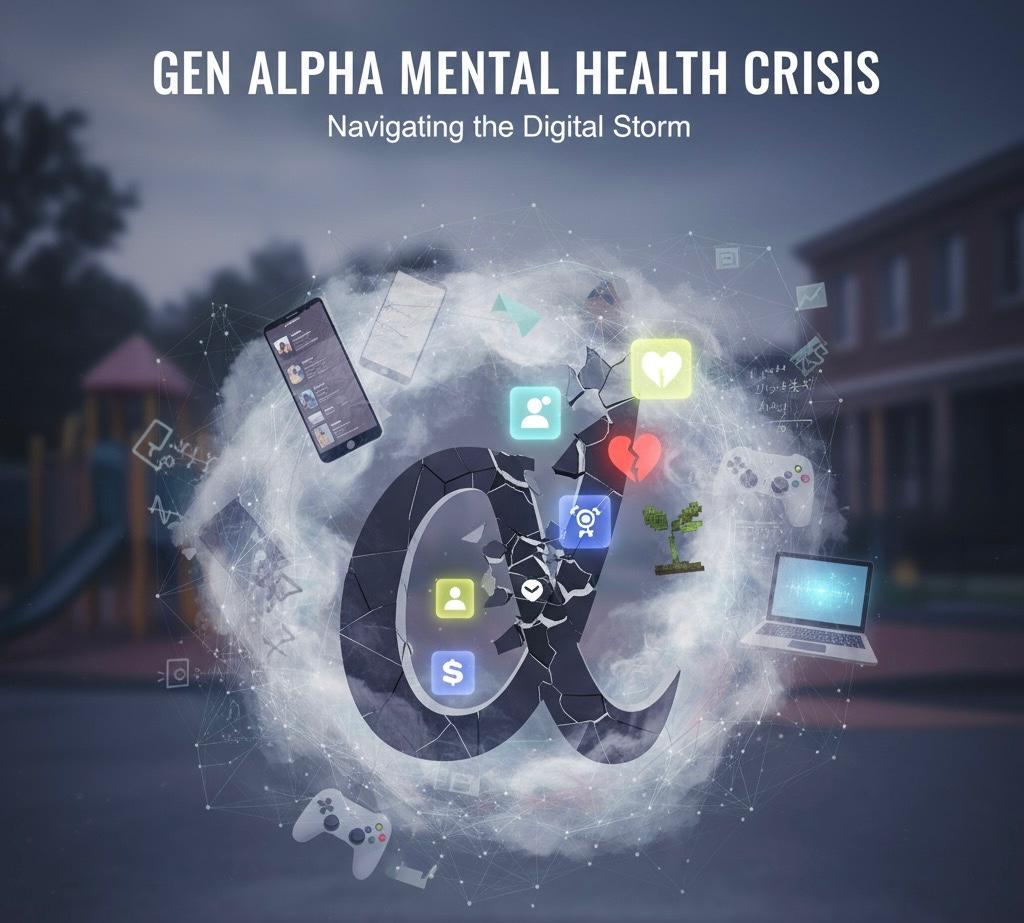Loneliness is a pervasive issue that significantly impacts mental health. It is a complex emotional state that arises when there is a perceived gap between desired and actual social connections. This article explores the relationship between loneliness and mental health, supported by scientific research, and offers insights into how individuals and communities can address this growing concern.
Understanding Loneliness
Definition and Types of Loneliness
Loneliness can be defined as a subjective feeling of social isolation or lack of companionship. It is important to distinguish between social isolation, which is an objective measure of the number of social contacts, and loneliness, which is the subjective feeling of being alone regardless of the actual number of social interactions (Hawkley & Cacioppo, 2010).
There are two main types of loneliness:
- Emotional Loneliness: Results from the absence of a close emotional attachment, such as a partner or close friend.
- Social Loneliness: Arises from the lack of a broader social network or community (Weiss, 1973).
The Impact of Loneliness on Mental Health
Depression and Anxiety
Research has consistently shown a strong link between loneliness and mental health issues such as depression and anxiety. Loneliness can lead to feelings of sadness, hopelessness, and a lack of motivation, which are core symptoms of depression (Cacioppo, Hughes, Waite, Hawkley, & Thisted, 2006). Additionally, the stress associated with loneliness can exacerbate anxiety disorders, leading to increased worry, fear, and panic attacks (Beutel et al., 2017).
Cognitive Decline
Loneliness is also associated with cognitive decline in older adults. Studies suggest that lonely individuals are at a higher risk of developing dementia and experiencing faster cognitive deterioration. The chronic stress and lack of mental stimulation associated with loneliness can contribute to this decline (Holwerda et al., 2014).
Suicide Risk
Loneliness is a significant risk factor for suicidal ideation and behaviour. The feeling of being disconnected from others can lead to a sense of hopelessness and a belief that life is not worth living. Research indicates that individuals who experience high levels of loneliness are more likely to consider and attempt suicide (Calati, Ferrari, & Oasi, 2019).
Physical Health Implications
The impact of loneliness extends beyond mental health, affecting physical health as well. Chronic loneliness has been linked to increased inflammation, higher blood pressure, and a weakened immune system, all of which can contribute to various health problems such as cardiovascular disease and obesity (Hawkley & Cacioppo, 2010).
Factors Contributing to Loneliness
Social and Cultural Changes
Modern social and cultural changes, such as increased use of digital technology and changes in family structures, can contribute to loneliness. While technology can connect people, it can also lead to superficial interactions and reduce face-to-face social contact, which are crucial for meaningful relationships (Turkle, 2011).
Life Transitions
Life transitions, such as moving to a new city, retirement, or the loss of a loved one, can lead to loneliness. These changes can disrupt existing social networks and make it challenging to form new connections (Victor & Bowling, 2012).
Mental Health Conditions
Certain mental health conditions, such as social anxiety disorder and depression, can contribute to loneliness. These conditions can make it difficult for individuals to initiate and maintain social interactions, leading to social withdrawal and isolation (Teo, Choi, & Valenstein, 2013).
Addressing Loneliness and Improving Mental Health
Individual Strategies
Building Social Connections
Fostering and maintaining social connections is crucial in combating loneliness. This can include joining clubs, participating in community activities, or reconnecting with old friends. Volunteering is another effective way to meet new people and create a sense of purpose (Cattan, White, Bond, & Learmouth, 2005).
Professional Help
Seeking professional help from psychologists or counsellors can provide support and strategies to cope with loneliness. Therapy can help individuals develop social skills, build confidence, and address underlying mental health issues (Masi, Chen, Hawkley, & Cacioppo, 2011).
Community and Policy Initiatives
Community Programs
Community programs aimed at reducing loneliness can have a significant impact. These programs can include social groups, community events, and support services that encourage social interaction and create a sense of belonging (Gardiner, Geldenhuys, & Gott, 2018).
Policy Measures
Policymakers can play a crucial role in addressing loneliness by funding and supporting initiatives that promote social inclusion and mental health. This can include public awareness campaigns, funding for community programs, and policies that support work-life balance and social cohesion (Jopling, 2020).
Conclusion
Loneliness is a complex and pervasive issue that significantly impacts mental health. Understanding the relationship between loneliness and mental health is crucial for developing effective strategies to address this growing concern. By fostering social connections, seeking professional help, and supporting community and policy initiatives, individuals and society can work together to combat loneliness and improve mental health outcomes.
References
- Beutel, M. E., Klein, E. M., Brähler, E., Reiner, I., Jünger, C., Michal, M., … & Tibubos, A. N. (2017). Loneliness in the general population: prevalence, determinants and relations to mental health. BMC Psychiatry, 17(1), 97.
- Cacioppo, J. T., Hughes, M. E., Waite, L. J., Hawkley, L. C., & Thisted, R. A. (2006). Loneliness as a specific risk factor for depressive symptoms: cross-sectional and longitudinal analyses. Psychology and Aging, 21(1), 140.
- Calati, R., Ferrari, C., & Oasi, O. (2019). Suicidal thoughts and behaviors and social isolation: A narrative review of the literature. Journal of Affective Disorders, 245, 653-667.
- Cattan, M., White, M., Bond, J., & Learmouth, A. (2005). Preventing social isolation and loneliness among older people: a systematic review of health promotion interventions. Ageing and Society, 25(1), 41-67.
- Gardiner, C., Geldenhuys, G., & Gott, M. (2018). Interventions to reduce social isolation and loneliness among older people: an integrative review. Health & Social Care in the Community, 26(2), 147-157.
- Hawkley, L. C., & Cacioppo, J. T. (2010). Loneliness matters: A theoretical and empirical review of consequences and mechanisms. Annals of Behavioral Medicine, 40(2), 218-227.
- Holwerda, T. J., Deeg, D. J., Beekman, A. T., van Tilburg, T. G., Stek, M. L., Jonker, C., & Schoevers, R. A. (2014). Feelings of loneliness, but not social isolation, predict dementia onset: results from the Amsterdam Study of the Elderly (AMSTEL). Journal of Neurology, Neurosurgery & Psychiatry, 85(2), 135-142.
- Jopling, K. (2020). Tackling Loneliness: A Community Action Plan. Campaign to End Loneliness. Retrieved from Campaign to End Loneliness
- Masi, C. M., Chen, H. Y., Hawkley, L. C., & Cacioppo, J. T. (2011). A meta-analysis of interventions to reduce loneliness. Personality and Social Psychology Review, 15(3), 219-266.
- Teo, A. R., Choi, H., & Valenstein, M. (2013). Social relationships and depression: ten-year follow-up from a nationally representative study. PLoS One, 8(4), e62396.
- Turkle, S. (2011). Alone Together: Why We Expect More from Technology and Less from Each Other. Basic Books.
- Victor, C. R., & Bowling, A. (2012). A longitudinal analysis of loneliness among older people in Great Britain. Journal of Psychology, 146(3), 313-331.
- Weiss, R. S. (1973). Loneliness: The Experience of Emotional and Social Isolation. MIT Press.
How to get in touch
If you or your patient/NDIS clients need immediate mental healthcare assistance, feel free to get in contact with us on 1800 NEAR ME – admin@therapynearme.com.au.







